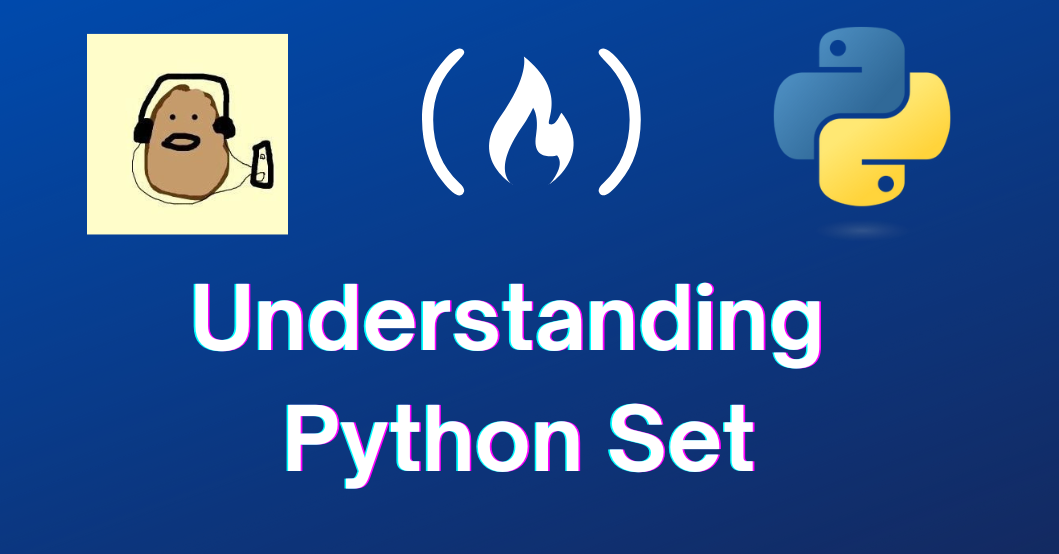In the vast landscape of Python programming, understanding data structures is akin to possessing a versatile toolkit. Among the essential tools in this arsenal is the Python set. Sets in Python offer a unique way to organize and manipulate data.
Let's embark on a journey to unravel the mysteries of sets, starting with an analogy that parallels their functionality to real-world scenarios.
You can get all the source code from here.
Table Of Contents
- What are Sets in Python?
- How to Create Sets
- Basic Operations
- Set Operations
- Other Useful Operations
- Conclusion
What are Sets in Python?
Imagine you're hosting a gathering of friends from diverse backgrounds, each with their unique identity. Now, picture this gathering as a set – a collection where each individual is distinct, much like the elements of a set in Python.
Just as no two guests at your gathering share the same identity, no two elements in a set are identical. This notion of uniqueness lies at the heart of sets.
How to Create Sets
In Python, you can create a set using curly braces {} or the set() constructor. Much like sending out invitations to your gathering, creating a set involves specifying the unique elements you want to include:
# Syntax: Creating sets using curly braces
# Example:
guest_set1 = {"Alice", "Bob", "Charlie", "David", "Eve"}
# Syntax: Creating sets using the set() constructor
# Example:
guest_set2 = set(["David", "Eve", "Frank", "Grace", "Helen"])
Basic Operations
How to Add Elements to a Set
Adding elements to a set mirrors the act of welcoming new guests to your gathering. You can use the add() method to include a new element:
# Syntax: Adding elements using the add() method
# Example:
guest_set1.add("Frank")
print(guest_set1) # Output: {'Alice', 'Bob', 'Charlie', 'David', 'Eve', 'Frank'}
Here, the add() method adds the name "Frank" to guest_set1, representing the arrival of a new guest named Frank to your gathering.
How to Remove Elements from a Set
Similarly, removing elements from a set symbolizes bidding farewell to departing guests. You can use methods like remove() or discard() for this purpose:
# Syntax: Removing elements using the remove() method
# Example:
guest_set1.remove("Charlie")
print(guest_set1) # Output: {'Alice', 'Bob', 'David', 'Eve', 'Frank'}
# Syntax: Removing elements using the discard() method
# Example:
guest_set1.discard("Bob")
print(guest_set1) # Output: {'Alice', 'David', 'Eve', 'Frank'}
In the first example, the remove() method removes the name "Charlie" from guest_set1, simulating the departure of the guest named Charlie from your gathering.
In the second example, the discard() method removes the name "Bob" from guest_set1, indicating the departure of another guest named Bob.
How to Get the Length of a Set
Just as you might count the number of guests at your gathering, you can determine the length of a set using the len() function:
# Syntax: Getting the length of a set using the len() function
# Example:
print(len(guest_set1)) # Output: 4
The len() function returns the number of elements in guest_set1, indicating the total count of guests present at your gathering.
Set Operations
How to Join Sets
The union of two sets combines elements from both gatherings, ensuring no duplicates:
# Syntax: Union of sets using the union() method
# Example:
all_guests = guest_set1.union(guest_set2)
print(all_guests) # Output: {'Alice', 'Bob', 'Charlie', 'David', 'Eve', 'Frank', 'Grace', 'Helen'}
Here, the union() method combines guest_set1 and guest_set2 into a new set named all_guests, representing the combined list of guests from both gatherings without any duplicates.
Intersection – How to Find Common Interests
Intersection identifies elements common to both sets, much like finding shared interests among guests:
# Syntax: Intersection of sets using the intersection() method
# Example:
common_guests = guest_set1.intersection(guest_set2)
print(common_guests) # Output: {'David', 'Eve'}
The intersection() method identifies the common guests present in both guest_set1 and guest_set2, storing them in the set common_guests.
Difference – How to Find Unique Attributes
The difference between sets showcases elements unique to each gathering, analogous to individual characteristics:
# Syntax: Difference between sets using the difference() method
# Example:
unique_to_guest_set1 = guest_set1.difference(guest_set2)
print(unique_to_guest_set1) # Output: {'Alice', 'Frank'}
The difference() method identifies the guests present in guest_set1 but not in guest_set2, storing them in the set unique_to_guest_set1.
Symmetric Difference – How to Find Exclusive Elements
Symmetric difference reveals elements exclusive to each gathering, akin to unique privileges or experiences:
# Syntax: Symmetric difference between sets using the symmetric_difference() method
# Example:
exclusive_guests = guest_set1.symmetric_difference(guest_set2)
print(exclusive_guests) # Output: {'Bob', 'Charlie', 'Grace', 'Alice', 'Frank', 'Helen'}
The symmetric_difference() method identifies guests present exclusively in either guest_set1 or guest_set2, storing them in the set exclusive_guests.
Other Useful Operations
How to Check for Subset and Superset – Group Dynamics
You can determine if one set is a subset or superset of another, reflecting group dynamics within the gatherings:
# Syntax: Checking for subset using the issubset() method
# Example:
print(guest_set1.issubset(all_guests)) # Output: True
# Syntax: Checking for superset using issuperset() method
# Example:
print(all_guests.issuperset(guest_set1)) # Output: True
These methods check if guest_set1 is a subset of all_guests and if all_guests is a superset of guest_set1, respectively, indicating the relationship between the two gatherings.
How to Clear a Set
Clearing a set removes all elements, akin to resetting the gathering for a fresh start:
# Syntax: Clearing a set using the clear() method
# Example:
guest_set1.clear()
print(guest_set1) # Output: set()
The clear() method removes all elements from guest_set1, effectively resetting it to an empty set.
Conclusion
By understanding the analogy and operations outlined in this guide, you're equipped to harness the power of sets in your Python journey.
Happy coding, and may your gatherings – both digital and physical – be filled with unique experiences and fruitful interactions!
If you have any feedback, then DM me on Twitter or LinkedIn.

